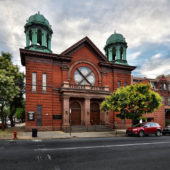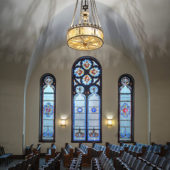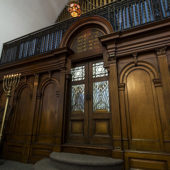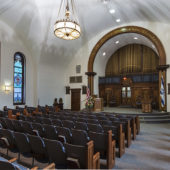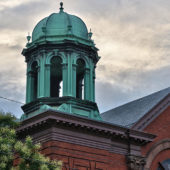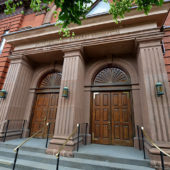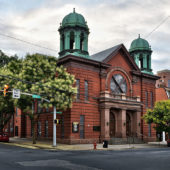With roots reaching back to Colonial times the synagogue maintains a strong Jewish presence in an area associated with the Pennsylvania Dutch
The Lancaster, Pennsylvania area is well known for its strong Pennsylvania Dutch community, so it may come as a surprise that the Jewish community’s roots date back to Colonial days. The first practicing Jew, Joseph Simon, settled in Lancaster in 1740. Soon, members of his extended family also settled in Lancaster and openly practiced Judaism. That small nucleus of Jews faded away. By the mid-1800s Jews began to return to Lancaster, forming congregation Shaarai Shomayim (Gates of Heaven) in 1855.
In 1867 Shaarai Shomayim dedicated its first permanent house of worship in a small single-story building, known as the Orange Street Synagogue. Outgrowing the Orange Street Synagogue, property was purchased and a building constructed at its current site in 1896. For its first few decades the Congregation worshipped more or less in the orthodox style. German was the language used for religious services, in the religious school and in the congregation’s written records. The congregation’s first professional rabbi, Morris Ungerleider, who came to Lancaster in 1884, influenced the congregation towards Classical Reform Judaism. His success in this respect is demonstrated by the fact that Rabbi Isaac Mayer Wise, the father of American Reform Judaism, was to dedicate the new building on Friday, April 24, 1896. .
The day before the new building’s dedication the odor of gas was noticed. A plumber was called to find the source of the problem. When he struck a match to in the sanctuary there was a violent explosion. The janitor was seriously injured yet the plumber was able to remain in the building and put out the flames. There was substantial damage: pews were ripped from their fastenings, the chandelier was thrown from the ceiling; panes in the building’s magnificent stained glass windows shattered; carpet and furniture was torn up and tossed about. .
Dinner for Isaac Mayer Wise and visiting dignitaries, along with a celebration, went on as scheduled. It was actually September before the building could be dedicated and put into use. Since that inauspicious beginning, Shaarai Shomayim has continually grown in membership, physical facilities as well as social activities and community outreach.

